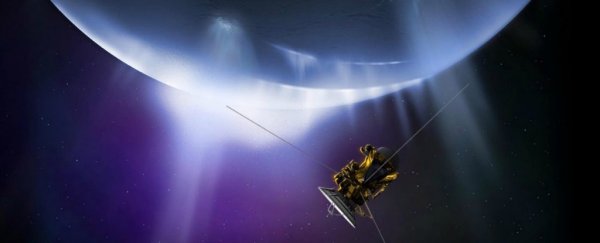If you could magically teleport across the solar system, Saturn would be a great place to swing by on Friday morning.
Hovering above the ringed planet's surface, you'd see something amazing. Just after 6:32am EDT, a bus-size object will scream over the cloud tops, burst into millions of pieces, and glow like a meteor.
But this meteor isn't a rock: It's NASA's nuclear-powered Cassini spacecraft plunging to its doom.
There's little chance telescopes will see the 20-year, US$3.26-billion mission come to an end.
However, NASA TV is broadcasting live online video of the final stages of Cassini's "Grand Finale", the moment its last stream of data comes in, and - by extension - confirmation that it's died. (You can watch via YouTube or Ustream at the end of this post.)
Why scientists are killing Cassini
NASA launched Cassini toward Saturn in 1997. The probe arrived in 2004, and has studied the planet, its rings of ice and dust, and collection of mysterious moons ever since.
On Friday, the mission is coming to a "a fiery end high above the clouds of Saturn," Earl Maize, an engineer at NASA's Jet Propulsion Laboratory (JPL) who manages the Cassini mission, told reporters during a NASA press conference on Wednesday.
"We'll be saddened, there's no doubt about it, at the loss of such an incredible machine," Maize said.
"But I think all of us have a great sense of pride … We set out to do something at Saturn, we did it, we did it extremely well, and we delivered more and more. And we've left the world informed, but still wondering."
The reason NASA is destroying Cassini is because of the spacecraft's most astonishing discovery.
In 2005, the probe detected jets of water shooting out of Saturn's moon Enceladus. It later flew through those geysers, helping confirm the moon hides a salty ocean below its ice-encrusted surface.
Titan - a moon of Saturn the size of planet Mercury - may also have a liquid ocean.
"To find that there's an ocean world so tiny with a possibility of life, so far from the sun - 10 times farther from the sun than the Earth - has opened up our paradigm of where you might look for life, both within our own solar system, and in the exoplanet systems beyond," Linda Spilker, a Cassini project scientist and a planetary scientist at NASA JPL, said of Enceladus during the press conference.
These water worlds may be habitable to aliens, and Cassini running low on propellant, so NASA is not taking any chances.
"Because of planetary protection, and our desire to go back to Enceladus, and go back to Titan," said Jim Green, the leader of NASA's planetary science program, "we must protect those bodies for future exploration."
How to watch NASA learn that Cassini has died
The space agency will begin live video coverage of Cassini's death on Friday starting at 9pm AEST (7am EST).
NASA can't see the probe destroyed from 932 million miles away, since no other spacecraft exist at Saturn. However, it will show an animation of Cassini's position.
Hosts will cover the ins and outs of the final moments live from NASA's Jet Propulsion Laboratory in California, where the mission is headquartered.
NASA expects the last signal - and confirmation of the probe's destruction - to arrive at Earth around 9:56 pm AEST (7:56am EST).
You can watch the NASA TV broadcast below at that time.

This article was originally published by Business Insider.
More from Business Insider:
